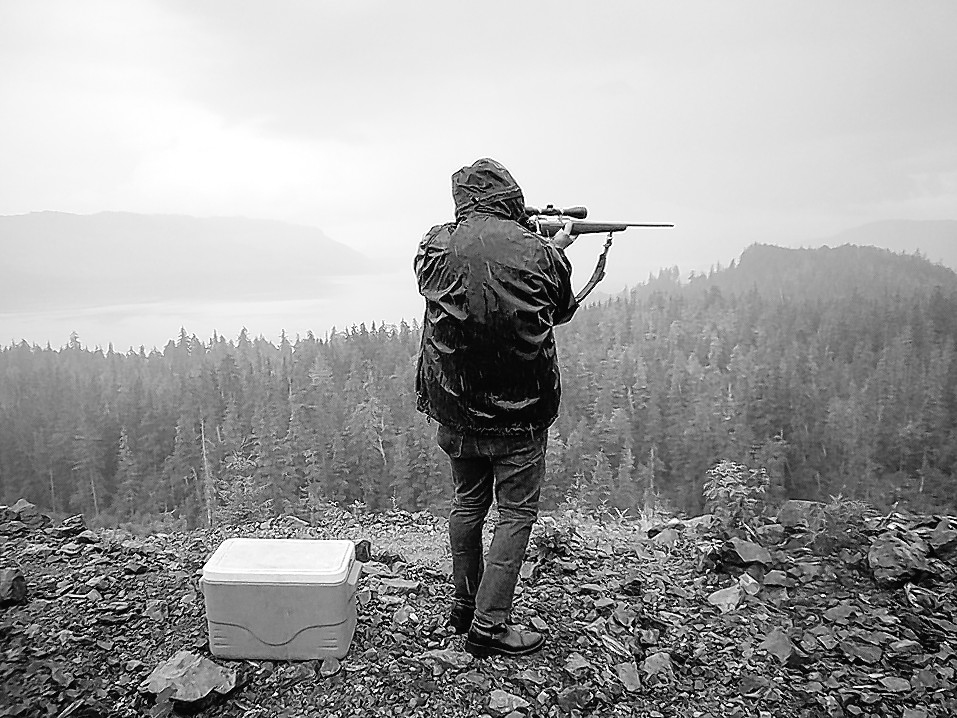War, racism, personal traumas and societal changes are all hard to talk about. Voices from Alaska’s rural Native villages are seldom heard in mainstream media. “Hunting in Wartime,” a new documentary film coming to Homer, breaks that silence.
In it, a group of Tlingit men from Hoonah who fought in the Vietnam War talk candidly about their experiences during and after combat and how those experiences shaped their lives and community. What emerges is a multilayered and nuanced story about struggle, survival and healing.
Filmmaker Samantha Farinella is coming to the Kenai Peninsula for the first time to show the documentary and hopes it will spark discussion. It will be shown once in Homer on July 16.
Hoonah had a remarkable tradition of military service. During the Vietnam War, 28 men from the village of 680 enlisted. Of those, 17 saw combat and one died. The other 16 returned to a community grappling with racism, poverty, substance abuse and loss of traditional culture.
As Alaska Natives and subsistence hunters and fishers, their experiences differed from other soldiers and veterans. They encountered Vietnamese who looked like them, lived in fishing villages like them and asked why they were there. They served a government that had devalued their heritage and banned their language. They were expected to apply their subsistence hunting skills to surviving combat and killing people. When they got back to Alaska, they found that new fishing regulations barred them from the livelihood they had expected.
Farinella learned about Hoonah’s unique history in 2010 from Sonya Gray, a Tlingit and anthropologist born there. They met through a mutual close friend. Gray became one of the producers of the film and Farinella’s first liaison to the community.
“I just found it very fascinating,” Farinella said.
The story involves many layers and nuances of personal and cultural issues. To tell it, she used old photographs from Alaska and Vietnam combined with video footage she and a small crew took in Hoonah. The heart of the film is a series of frank interviews.
She worked with more than a dozen veterans and their families in the Southeast Alaska village, traveling there to meet and interview people over a 5-year span beginning in 2010. “The story is told totally in their voices,” she said.
Farinella stressed that this is not a political documentary but a human story. It has something for everyone, common ground for liberal or conservative.
Recording interviews meshes well with the Tlingit custom of transmitting knowledge via oral history. Making the documentary provides a way for the villagers to memorialize and sort out that difficult phase before time silences that generation of veterans, she said.
Farinella described her relationship with villagers as smooth and natural. She worked closely with the Hoonah community and intends to archive the original interview footage in the village. People’s interest and candor impressed her. “Everyone was really helpful,” she said.
She witnessed that making the movie was a moving experience for all involved. “This film helps these guys heal,” she said. “On a micro level it really draws people together in the community. … It opens up doors – to talk about things.”
Farinella hopes that younger veterans from the recent conflicts in the Middle East will watch the documentary. They can see what the previous generation went through and learned during 40 years of coming to terms with postwar life.
“It is a heavy movie – I’m not going to lie,” she said. The men lost a lot, but they survived. “Most climb back out. They are leading healthy lives.”
She showed a preliminary cut of the film to people in Hoonah last year and made several changes based on their feedback. One change was to the title. It had been “Hoonah’s Heroes” but the villagers were uncomfortable about calling what they did heroic. She considers the new title “metaphorical,” she said, juxtaposing the sacredness of traditional hunting with the profanity of wartime killing.
Reaction to the early screenings has been positive. “All the veterans really enjoyed the film,” she said.
Farinella returned to Alaska in March and screened the documentary in Anchorage at the Alaska Press Club meeting. Through that screening she met Catkin Kilcher, from Homer, who put her in contact with the Homer Theatre.
This film is particularly aimed at veterans and Natives. On this trip, she will also screen it at the Alaska Native Heritage Center in Anchorage. She has to do all the publicity and distribution herself, so relies largely on word-of-mouth.
Farinella is an independent filmmaker based in New York City. She has worked on television production and made six previous documentaries and four narrative shorts, including one that was a finalist at the Sundance Directors’ Lab.
She said that she loves film, but finds it a challenging career for a person of modest means. For “Hunting in Wartime,” financing came from a variety of grants and crowdsource donations. In Alaska, the major support has come from the Rasmuson Foundation and the Alaska Humanities Forum.
The screening will be at the Homer Theatre, on the corner of Pioneer and Main, on Thursday, July 16, at 6 p.m. General admission is $8 or $6 for military. A question-and-answer session will follow.
Hunting in Wartime
A documentary film by Samantha Farinella
wHEN:
Thursday, July 16
6 p.m.
where:
Homer Theatre
106 W. Pioneer Ave.
admission:
$8 general, $6 military


